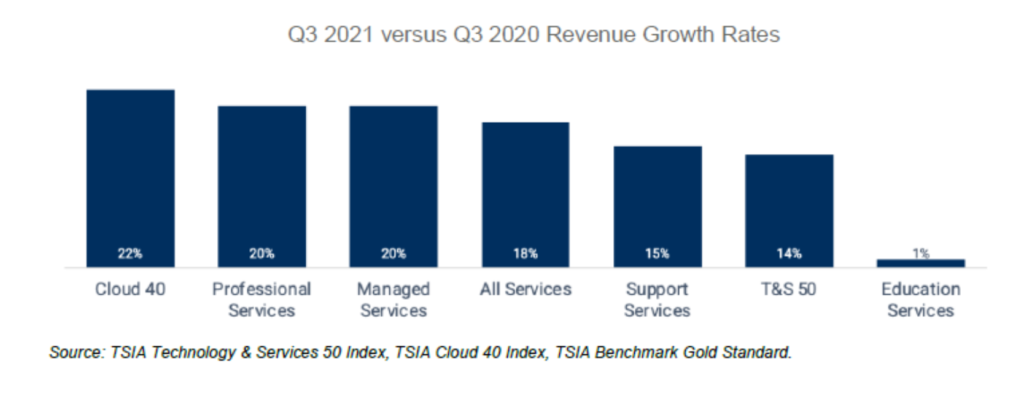
For services professionals today, there are many discussions centered around the differences between managed services vs professional services, as well as which one is the right fit for your organization. In this blog, we define the following:
- Key differences between managed services vs professional services
- Similarities and challenges of both services and what it means for your organization
- How to find the right PSA solution (checklist) and more!
First, let’s take a look at both services side-by-side to better understand how they are integrated within a business or organization’s day-to-day operations.
Managed services are a form of services where a business relies on a third party to manage their daily operations or business processes. These services offer a wide range of features and solutions, such as 24/7 IT support, cloud solutions, data backups, cybersecurity, network monitoring, and more.
Professional services, unlike managed services, are typically offered on-demand or project based, offering a wide range of services including digital transformation, business strategy, management consulting, data architecture & visualization, UX/UI design and more.
Customers often require professional services to be successful in enjoying the benefits of complex business or technology change initiatives they are rolling out in their organization.
While both types of services help you address your business needs, where they differ includes time frame and scope of work. For example, professional services are typically required on a need-to-need basis, which includes handling specific tasks or focusing on a set of initiatives. While managed services mainly work off-contract, handling an organization’s operational needs on an ongoing basis.
Both segments are fast-growing segments of the services industry, as noted by the recent TSIA Technology & Services Index:

What Are Managed Services?
Managed services organizations, also known as managed services providers (MSPs), provide ongoing management of products and operational processes. The best example of an MSP, involves IT outsourcing, which has been around in the industry for decades.
Most if not all of their revenue is derived from services. With the focus on operational management on a annual or multi-year contract basis, MSPs are often measured on specific KPIs related to the operational area and heavily driven by managing cost of the delivery team to meet internal financial goals.
What Are Professional Services?
According to TSIA, “Professional Services are specialized services requiring expert knowledge in a given field, which applies to all kinds of professional services: legal, engineering, and accounting.”
Customers often require professional services to be successful in enjoying the benefits of complex business or technology change initiatives they are rolling out in their organization.
Professional services organizations can also vary based on their structure. We break these into two distinct models that have varying needs for the business:
- Embedded Services Organizations – service organizations that are part of a larger product company. Their focus is typically on driving an enhanced digital customer experience for the customers that purchase their products.
- Pure Play Services Organizations – standalone services organizations offering consulting and other billable services to customers. Most if not all their revenue is derived from services.
A Comparison Between Managed Services and Professional Services
A good comparison of managed services vs professional services can be seen by the main challenges each segment faces in their business. For comparison, according to TSIA, there are three top challenges faced by both managed services and professional services organizations today.
For managed services organizations, their top challenges include:
- Growth
- Retention
- Profitability
While, professional services organizations struggle with the following:
- Resource Management
- Optimization of Services Engineering
- Business Model Optimization (specifically the transition to XaaS & outcome-based consulting models)
Although both segments need to drive return to the business in terms of profitability – their different business models drive different strategies.
Managed Services organizations need to retain and renew existing services subscriptions (no different than SaaS software companies) and continue to focus on optimizing and automating delivery to reduce costs thus increasing profitability.
Professional Services organizations continually need to optimize utilization of their resources and ensuring the right resource is in the right place with the right skills at the right time and that they engineer their solutions correctly up front to reduce re-work in the delivery cycle.
What is truly transforming professional services organizations is the move to subscription and outcome-based business models to optimize their business models to align with recurring revenue and value driven solutions.
Finding the Right PSA Solution: Checklist
With so many choices for a PSA solution, finding the best possible solution can be excessively time consuming, complex, and overwhelming.
Luckily, we’ve outlined a checklist to help you started on finding the right professional services solution to fit your needs.
- Consult Credible Research Organizations
- Network with Industry Experts
- Identify Your Organizational Needs
- Identify The Essential PSA Features
- Understand The Best Practices for Implementation & Adoption
Interested in learning more about PSA tool or solution adoption?
Read the full article on “How to Find The Right PSA Tool for Your Business” for more information or browse some of our key resources below.
Conclusion
Regardless of whether you are a managed services or a professional services organization, your business is continually changing and adapting to new business models and market pressures.
Ensuring your PSA and surrounding business technology landscape can support you in this constant change and provide you with the analytics and insight necessary to navigate that change and make good decisions is crucial for your success.
Looking for more insights on services automation and professional service automation solutions?
- Watch Planview’s Professional Services Automation Solution On-Demand Demo
- Download the Ultimate Guide to Professional Services Automation
Contact us to discuss how Planview can help make your organization’s engagements more predictable and profitable.




